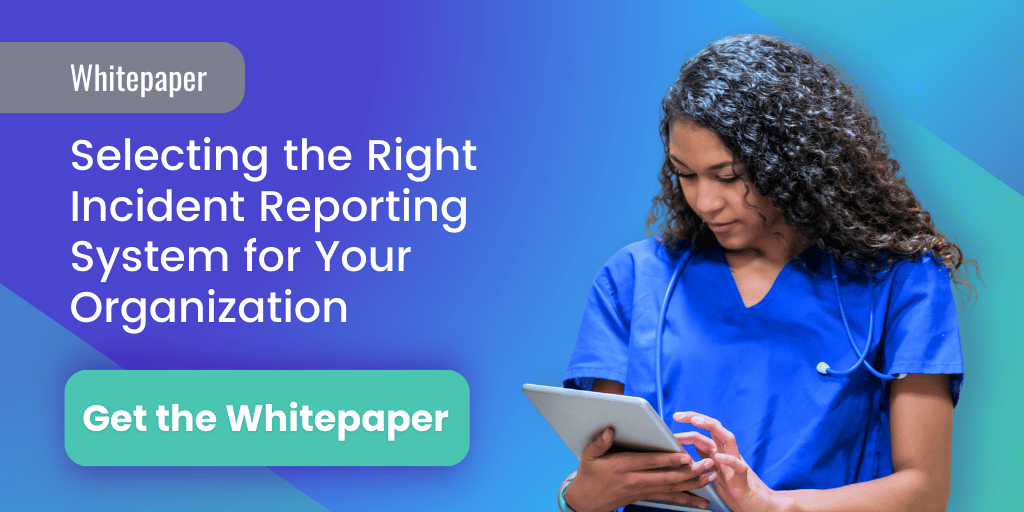4 min read
Healthcare Risk Management Software: Unlocking Safer Maternal Health
Performance Health Partners
December 9, 2024

While maternal death rates have declined in many high-income countries, the United States has seen a troubling rise over the past two decades, with racial and ethnic disparities persisting at alarming rates. To address growing maternal health risks, healthcare risk management software has become an essential tool, enabling providers to track and mitigate safety concerns in real time. With features like incident reporting and data analysis, this technology helps healthcare systems improve maternal care and reduce preventable complications.
The State of Maternal Health Risks
Maternal health risks are frighteningly common, with global statistics highlighting alarming trends. According to the World Health Organization, a United Nations report showed that over 4.5 million women and babies die every year during pregnancy, childbirth, or the first weeks after birth mostly from preventable or treatable causes. In fact, progress in improving survival has stagnated starting in 2015, with around 290,000 maternal deaths each year since.
Many of these maternal deaths stem from complications that can be prevented with the right care. Among the leading causes of maternal mortality include:
- Bleeding
- Heart conditions
- Infection
- Heart failure
- Blood clots
- Mental health conditions such as depression and anxiety
Infections alone are the second-biggest cause of maternal mortality in the U.S. and account for about 11% of maternal deaths globally, despite being largely preventable through timely intervention and incident reporting.
Hemorrhaging, often preventable with better monitoring and emergency response, and hypertensive disorders, which cause 7% of maternal deaths in the U.S., also highlight gaps in care that can be addressed with improved safety measures.
The high-risk nature of maternal healthcare emphasizes the urgent need for improved safety protocols and practices. Without a system for identifying and addressing maternal health risks, mothers may continue to suffer.
Understanding Healthcare Risk Management Software
Healthcare risk management software is a tool that helps healthcare organizations identify, assess, and mitigate risks. The software integrates functions like incident reporting, real-time data capture, and analytics dashboards to monitor patient care, staffing, and equipment safety.
By recording adverse events and near misses—such as medication errors or complications during delivery—healthcare providers can identify patterns and vulnerabilities that might otherwise go unnoticed. This ability to track and monitor incidents allows teams to pinpoint root causes, such as misdiagnoses, care coordination gaps, or staffing shortages, and improve safety protocols based on data.
A major benefit of this software is real-time data capture, which allows healthcare providers to make immediate, informed decisions in high-risk situations. The software analyzes incident data to offer actionable insights, helping healthcare teams identify root causes and prevent future occurrences.
For example, if trends show recurring medication errors in a certain facility or during a particular shift, the software can, through data analysis, prompt changes in protocols or additional staffing. This proactive approach fosters a culture of continuous improvement, where risks are anticipated and mitigated before they lead to adverse outcomes, ultimately enhancing patient safety and care quality.
Incident Reporting in Maternal Health
Incident reporting is one of the most important aspects of healthcare risk management software. In maternal health, this means systematically documenting safety events, adverse reactions to treatments, or failure to follow safety protocols during childbirth.
Medication errors during labor and delivery can have severe consequences. For example, an “American Journal of Obstetrics and Gynecology” review found 21 cases where tranexamic acid—a medication used to reduce bleeding—was mistakenly given to patients before a cesarean section, instead of the correct spinal anesthetic. This error led to life-threatening complications in 20 of those cases, and tragically, ten patients died as a result.
A “Healthcare (Basel)” study of a hospital found that women were frequently transferred to the intensive care unit (ICU) before or after delivery due to preventable adverse events. Upon further investigation, it was found that almost half of these adverse event cases were a result of peripartum therapy delay. Around 36% of cases were due to diagnostic errors and 33% were attributed to organizational errors, lack of communication, differing levels of training, and lack of resources.
With an effective incident reporting system in place, such errors can be tracked, analyzed, and addressed through improved protocols and proactive maternal health risk management.
Consider the maternal near-miss case review (NMCR) cycle case. NMCR is a continuous process aimed at improving the quality of maternal care. It involves healthcare teams reviewing cases where women nearly died due to pregnancy-related complications and identifying what worked and what could be improved to prevent similar situations.
Studies have shown that implementing the NMCR cycle led to a significant reduction in maternal mortality rates and life-threatening conditions. Specifically, three out of six studies reported a notable decrease in uterine ruptures, postpartum hemorrhages, and maternal sepsis. Additionally, all studies that measured maternal care processes showed notable improvements compared to established standards.
Data collected from incident reporting systems can enhance the NMCR cycle by providing a broader view of potential maternal health risks and near misses within healthcare facilities. By continuously analyzing incident reports, healthcare teams can implement enhanced monitoring protocols and quicker responses to complications. These examples highlight the critical role of incident reporting in driving continuous improvement in maternal healthcare.
Best Practices for Implementing Healthcare Risk Management Software
Implementing healthcare risk management software in maternal health settings requires a strategic and thoughtful approach to ensure its effectiveness.
One of the key strategies is to establish clear objectives and goals for the risk management system. Organizations should identify specific maternal health risks they aim to address, such as reducing incidents related to labor and delivery complications or improving the management of high-risk pregnancies.
It's also essential to customize the software to fit the unique needs of the facility, ensuring that it integrates smoothly with existing workflows, electronic health records, and clinical processes.
Training and education are crucial to the successful implementation of healthcare risk management software. Healthcare staff, particularly those directly involved in maternal care, need to understand not only how to use the software but also why it is essential for improving patient safety.
Comprehensive training programs should be developed to teach staff how to log incidents, analyze data, and use the software's reporting features. Additionally, ongoing education is necessary to keep staff updated on system upgrades and new functionalities. Hands-on workshops, simulation training, and real-world case studies can help staff feel more comfortable using the system and understanding its impact on patient care. By fostering a collaborative learning environment, staff are more likely to embrace the software and use it to its full potential.
Leadership buy-in and fostering a culture of safety are equally important for the successful implementation of healthcare risk management software. Leadership involvement ensures that risk management is prioritized at every level, encouraging staff to actively engage with the software and participate in safety improvement efforts.
Beyond technology, leadership should focus on cultivating a culture where open communication about risks, near misses, and incidents is encouraged without fear of repercussions. This culture shift is crucial for staff to report issues honestly and contribute to continuous improvement efforts. By aligning the organization’s values with patient safety and making it part of the core mission, healthcare leaders can create an environment where risk management software is not only utilized but is instrumental in transforming maternal health practices.
Healthcare risk management software has the potential to transform maternal health practices by enabling real-time risk identification, improved incident reporting, and data-driven decision-making. As healthcare organizations invest in advanced risk management tools, they are better equipped to enhance the safety of mothers and newborns.



